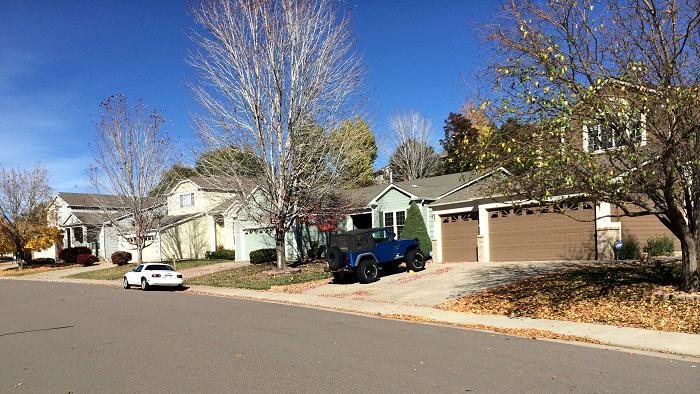
Four years ago, life changed a lot for 13-year old Ryan, who lives in the Highlands Ranch suburb south of Denver. It started when his mom lost her $70,000 a year job as a commercial property manager and his dad, who's divorced from his mom, lost his job too.
For Ryan, it meant no more family trips and no more sports.
“I used to play hockey and I used to play soccer and then I quit playing soccer and hockey because of money,” he says.
Ryan’s actually not his real name. He didn’t want friends and neighbors to know about his family’s money problems. Eventually, his family turned to a food bank because his mom couldn’t afford to put food on the table.
Ryan’s story is echoed by many families across the country in recent years, but it’s particularly stark in Douglas County where Ryan’s family lives. The county is one of the wealthiest in the nation, but the number of kids in poverty has gone up 80% since 2007. According to recent numbers, that translates to about 4,000 children. The number of homeless children has also risen dramatically, from 450 students in 2007 to 902 students at the end of the 2013-2014 school year.
The child poverty rate, while down slightly according to new Census Bureau figures released last week, is still nearly double what it was in 2007.
Ryan’s mom, who we'll call Yvonne, says she held off on job offers for lower-paying jobs thinking she’d find one at a comparable salary.
“It’s like a bad situation keeps getting worse and worse and even though you try to get back on your feet and go forward, there just aren’t the same jobs that there used to be,” she says.
Yvonne lives with Ryan and her other 16-year old son in a modest two-story house in Highlands Ranch. She says she thought about moving when she lost her job because she couldn’t afford her mortgage, but moving was expensive too and it might have meant pulling the kids out of their school. Instead, she racked up $20,000 in credit card debt.
Douglas County is one example of a growing trend throughout the country. Poverty has been rising in the suburbs faster than in the cities and today more poor people live in suburbs than cities. In Colorado, between 2000 and 2013, the poor population outside of Denver and Aurora more than doubled.
While Douglas County is wealthy as a whole, there are still pockets of poverty within it that rival urban and rural rates. This map, using 2012 American Community Survey data from the U.S. Census Bureau, shows the child poverty rate in Douglas County.
That means the suburbs are playing catch-up to provide services to poor kids and families.
“Many of these communities haven’t built up the same sort of support systems or safety nets that cities have developed over decades of addressing these challenges,” says Elizabeth Kneebone of the Brookings Institution, who has studied the growth and spread of poverty in the United States. “That’s what’s made it particularly difficult in recent years when the growth has been so rapid in many of these communities.”
Kneebone says some of these families, like Ryan’s, are facing financial struggles for the first time and need extra support to find services. She says the suburban communities that are the most successful in helping poor families are those that organize community outreach efforts and door-knocking campaigns.
Ryan’s mother, Yvonne, says she was lucky to find a food bank through a community magazine that was delivered to her door. She eventually took a job as an office manager at a small business in Centennial making half of what she made at her last job—about $40,000 a year—with no health benefits.
“It is hard to think about the future. I think about my boys going to college and me not having any money to put away," Yvonne says. “In my mind, I always thought that they would go and now I don’t know.”
Yvonne says her main focus these days is getting food on the table and figuring out a way to send her boys to college.
This story is part of our ongoing exploration of Colorado kids who are living in poverty, how it affects their lives and our common future. Share your thoughts on this story and tell us what you want to know by commenting below.








